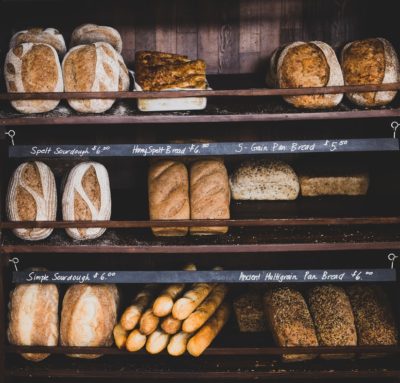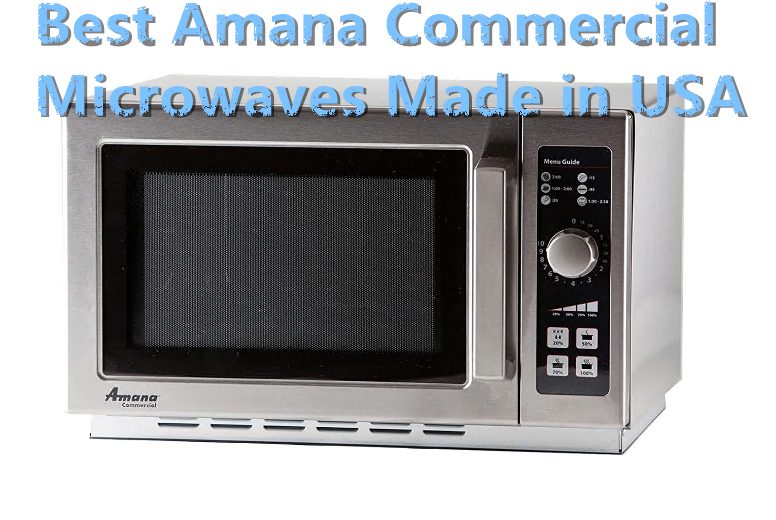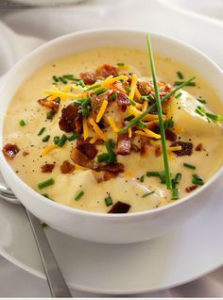Bread: it’s truly a labor of love. There’s the mixing, the kneading, the resting, the kneading again, the slapping, the shaping and rolling and then some more resting again. It’s definitely a lot of work for which most people don’t have the time for and the reason why most of us purchase bread that is already made.
However, as Americans become ever more conscious of the ingredients in their food and start following alternative eating habits such as low-carb or gluten free, interest in homemade bread has started to grow.
This has brought about the comeback of bread machines, an expensive niche product when they first came out in the 90’s that has now become a highly sought-after kitchen appliance.
Quick Bread Machine Comparison
Product | Quality | Price | Our Rating |
|---|---|---|---|
A+ | $$$ | ||
A | $$$ | ||
A | $$ | ||
B | $ | ||
B | $ |
**Below, you'll find our more detailed reviews, but you can also click the links above to see current prices or read customer reviews.
Why you should be making your own bread

The biggest advantage to making your own bread is the control that you get over what goes in it. Most store-bought bread is a processed product that is quite far from being real bread and is laden with additives to preserve texture, shape, color and flavor and stop mold growth.
In addition, it’s normally made with low quality flour or one that has a low nutritional profile such as the bleached white variety. Even breads that claim to be “whole wheat” are mostly white flour with a small amount of whole wheat flour mixed in and plenty of sugar courtesy of the addition of corn syrup, rice syrup or molasses.
The second most important advantage is all the time and money that it will save you. When scaled down to price-per-serving, making your own bread is much more affordable than buying it at the store.
The initial purchase of the necessary ingredients you’ll need plus the bread machine will definitely represent more money up front. However, you will quickly recoup your investment over time, especially considering the fact that you will be making a more high quality product that would also cost a lot more when purchasing prepared.
Last but not least is the satisfaction you get to feel after throwing all your ingredients into a machine, go do something else - maybe even go to work - and come back to a delicious, warm loaf of bread you can actually feel good about eating the next day for breakfast.
WHY USE A BREAD MACHINE

Bread machines take much of the guesswork - and actual work- from making bread. They take care of the mixing, kneading and baking parts of the process with easy-to-follow instructions and minimal intervention from the user.
Bread makers are not only useful for making bread loaves from start to finish but also for making dough that you can use for pizza crust or other types of bread such as focaccia.
Most machines have a dough setting that will essentially knead the dough for you. All you need to do once it’s finished is rest it and then pop it into your oven for low-effort homemade bread.
Beyond bread

One quick Google search on bread makers will show you that they mostly make the types of bread loaves that are normally sliced and packed for sale at supermarkets. Although the bread made at home is of a higher quality and is made with better ingredients.
This doesn’t mean that you have to limit yourself to homemade white loaf bread. There are plenty of ingredients you can experiment with to create unique flavors and textures. You can try using oatmeal flour, making cinnamon-raisin loaves or baking Parmesan-rosemary bread that will take your lunchtime turkey sandwich from lunchbox staple to a crave-worthy concoction.
More than producing loaf-style bread at home, we believe that the true value of a bread machine lies in the endless possibilities that their dough cycles offer.
In fact, many people own bread machines for the dough cycle alone and do not use them for baking at all. Dough cycles allow you to skip the labor intensive part of kneading dough for French bread, pizza crust, pretzels, dinner rolls, etc. and just rest it once it’s been processed for the amount of time your recipe requires before baking.
Many bread machines also include jam settings that will allow you to add jam to the repertoire of items you can make healthier versions of at home.
Who benefits most from a bread machine

Bread machines are a great kitchen gadget for those who want the satisfaction of making their own bread or dough for other baked goods but don’t have the time for it. Or for those who may have physical limitations that make it difficult to do it.
People who live in areas that are far from supermarkets or bakeries or in which finding specialty products can prove difficult, will find it extremely convenient to be able to make bread to their preference without having to drive an hour to the nearest store or settle for unhealthier options.
Likewise, those that are in places where it may be difficult to find healthy versions of foods that have been made unhealthy by mass production or fast food restaurants such as pizza, cakes, jams and other baked goods will reap plenty of benefits from being able to make better and more delicious varieties of these foods at home.
Bread makers are especially useful for people who have food allergies or restrictive diets and who often have trouble finding baked goods with ingredients that are safe for them to consume.
These machines not only allow people to control all ingredients that go into the finished product but also provide for a more affordable way to access things such as gluten-free breads and nut-free baked goods that can run expensive in many places.
bread Machine shopping guide
Bread machines are more popular and widely available than ever. Nearly every kitchen appliance brand has their own version of them and most machines share similar settings for different types of breads.
They also have delay timers that are useful for programming the time at which you want your loaf to start baking. Still there are a couple of things that you keep in mind when shopping for one:
Size and Weight
Some bread machines can run quite heavy and large. Pay attention to how much counter or cabinet space you have to devote to your machine and check whether its weight is comfortable enough for you to lift it.
Kneading Settings
Kneading dough is a tough job so make sure that your machine’s paddles can stand up to the job, especially if you’re going to be using heavier dough such as gluten-free.
Heating
A machine with good heating settings will ensure an even bake and avoid heavy, dense loaves.
Removable Pan
A removable pan may be the thing that marks the difference on whether you use your machine or let it waste away in a corner as it will make cleanup much easier.
Fruit and Nut Dispenser
This feature is especially useful if you plan on making sweet breads such as banana loaves or just add nuts to your savory breads as it will add these ingredients at the right time without you having to add them yourself.
Top 5 Best bread machines
1. Zojirushi Home Bakery Virtuoso Plus Breadmaker

A long-time gold standard, this Japanese-made machine promises perfectly baked loaves every time thanks to a combination of dual kneading blades that knead dough to perfection and dual heaters located both in the bottom and in the lid to bake it evenly.
The Virtuoso has a multitude of settings including vegan, sourdough and gluten-free and three different choices for crust: light, medium and dark. In addition, kneading, rising and baking times are customizable for further experimentation.
Users appreciate its good kneading action, which makes it a great machine for those who are interested in baking breads that have tougher dough such as low-carb and gluten-free.
Although it comes with a hefty price tag, we definitely consider it a sound investment if you’re serious about making your own bread.
Pros
- 14 Pre-programmed settings
- 3 memory settings
- 13-hour delay timer
- Rapid courses
- Custom courses
- Dual kneading blades
- Dual heaters
- Easy-to-read LCD display
- Large viewing window
- Jam, cake, and dough courses
- Gluten-free cycle
- Non-stick bread pan
Cons
- Expensive
- Large - takes a lot of counter space
- Push buttons are reported to wear out with time
2. Breville Custom Loaf Bread Maker

If you’re interested in other possibilities that having a bread machine at home can open for you, the Breville Custom Loaf Bread Maker is a great option.
Aside from offering options for baking loaves from 1 pound to 2 1/2 pounds, this bread maker is also great for making dough for pizza crust, focaccia, pasta dough and even jam.
It comes with a fruit and nut dispenser that makes it easier to automatically add flavor and nutrition to your breads and a collapsible paddle that reduces the hole in the bottom of the loaf that so many other bread machines leave.
Pros
- 13 Pre-programmed settings
- 3 Crust color options
- 9 Custom settings
- Gluten-free cycle
- Easy-to-read LCD display
- Pause button
- Automatic fruit and nut dispenser
- Non-stick bread pan
- Makes up to 2.5lbs loaves
Cons
- Complaints with the Collapsible Bread Paddle
- Expensive
- Size and weight
3. Cuisinart CBK-200 2-lb Convection Bread Maker

The Cuisinart Convection Bread maker has a couple of features aimed at giving you a wonderful loaf of bread.
Its convection feature circulates hot air to allow for even baking and better color though 16 different cycle options that include low-carb and gluten free options.
The artisan option allows dough several cycles of rising and cooling which create a better texture on your bread and crunchier crusts.
Pros
- 16 Pre-programmed settings
- 3 Crust colors
- Gluten-free cycle
- Convection feature
- 15-minute Pause
- 12-Hour-Delay Start
- Removable Lid
- Handles on the sides of the machine
- Interruption recovery
Cons
- Size and weight
- The LED back screen is not back-lit
- The dark crust may be too dark
4. Oster Bread Maker

This compact, budget-friendly option is perfect for those who have small counter space or smaller families or who just aren’t sure whether they will be using their bread machine often enough to justify a larger investment.
Although it’s small, the Oster Bread Maker packs over 12 different bread settings and three crust levels plus the same 13-hour delay timer that can be found in more expensive models.
It features an especially useful Expressbake cycle which will produce a 2 pound loaf in an hour.
Pros
- 3 Crust settings
- 13-hour delay timer
- Warm setting
- Expressbake cycle
- Compact size and lightweight
- Affordable
- User-friendly
- Non-stick pan
- Good value for the money
Cons
- Only 9 pre-programmed settings
- No gluten-free setting
- Loud beeping signal for adding ingredients can’t be silenced
5. Hamilton Beach Bread Maker

Another budget and small space-friendly option, this bread machine is perfect for first-time users.
It’s easy to operate and even easier to clean up with a removable dishwasher safe, non-stick pan and paddles.
It features 12 different bread settings and includes a very useful manual with detailed instructions and a repertoire of recipes using Bob’s Red Mill products.
Pros
- 12 Pre-programmed settings
- 3 Crust settings
- Gluten-free cycle
- Delay timer
- Compact size
- Affordable
- Non-stick pan
- 2 Kneading paddles
- Good value for the money
Cons
- Bit noisy when mixing and kneading
- The non-slip feet aren’t non-slip enough
- Knead paddle comes loose
Conclusion
There is quite a lot of that could be included in a review on bread machines. However, knowing all of the above should give you the ability to choose the best one for you and your family. While determining which one is best could depend on your specific circumstances, all of the bread makers mentioned above come highly recommended.
While it could take some time to figure out which bread machine is the best for you and your family, this should be worth it over time. Therefore, being patient before making your decision could be the best approach.











